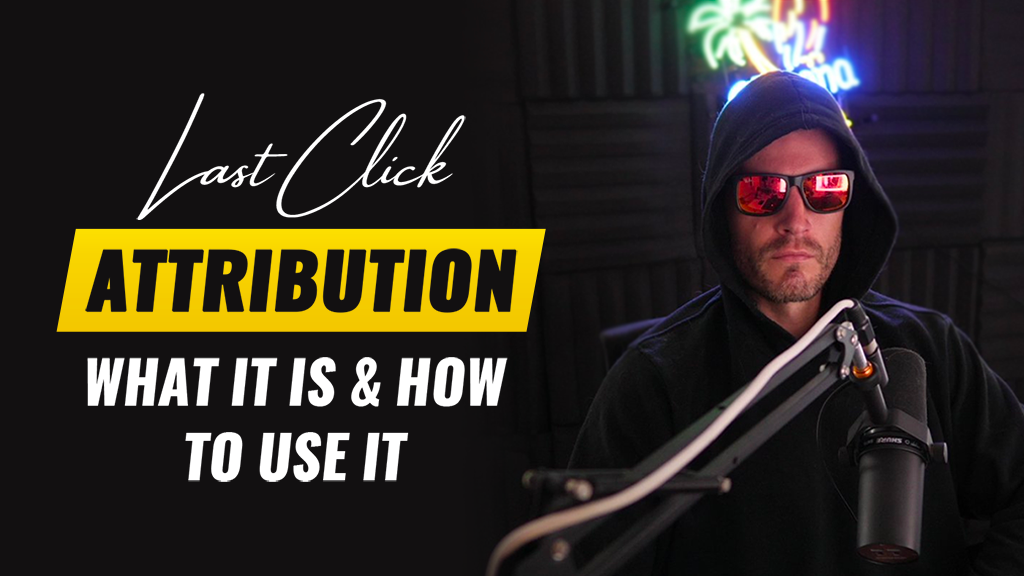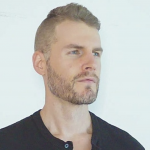
What Is Last Click Attribution And How To Use It
Ok ladies, gents, and marketing ghouls, it’s a spooky season around here, so this is about how to use the tricks and treats of last-click attribution without it spooking you so much that you’re terrified of ad buying again.
That being said, last-click attribution is just one part of your strategy; you shouldn’t limit it to just one data point, but to do that effectively, you need to properly track your attribution, which is the scary part that I see.
But unfortunately, most people don’t know how to track correctly.
So they spend a ton of money on the wrong ad buys, scale the wrong ads, and end up in a treehouse of horrors.
What Is Last-Click Attribution
Before we start, let’s give a quick boring answer about how to define what last-click attribution is.
Last-click attribution measures what ad or campaign you ran that led to an opt-in or sale. It is a tracking function that gives credit to the touchpoint in your campaigns and funnels that ultimately led to a sale and gave that function credit. How’s that for complicated gobbly-gook?
Last-click attribution is what you track that causes a person to opt-in or buy from you. It’s the final touchpoint that you give credit for a sale.
So if you’re doing any ad buy and looking to scale, you want to look at where your customers are coming from and attribute what ads are performing best.
Last-click attribution is a strategy that’s been around since the dawn of the Internet, at least internet sales, and can provide you with some data. Still, it’s incomplete if you’re not tracking your ads and attribution correctly.
That being said, last-click attribution can be a great way to scale your ads if you know what you’re doing, have a strategy, and base it on good data. Otherwise, you’re wasting your time.
How To Use Last-Click Attribution
Last-click attribution is a great strategy to find out what was the reason a person clicked on your ad and got to your sales call or whatever. It’s a great way to see the final stage of your funnel as well.
Last-click attribution is excellent if you’re running a bunch of ads on Facebook or Google, even if you’re running ads on YouTube, and with Hyros, we help people generate millions in ad buy and sales effectively through YouTube ads; you should check it out.
So let’s think about how last-click attribution would work for you, okay? For example, if you were running ads and a person clicked the ad, went to your landing page or website, and checked out some content, and something caught their eye, so they clicked to book a sales call or buy something, last-click attribution would give credit to the final post or video that got them to act.
So if you’re running ads and tracking through last-click attribution, you will decide, “hey, I should probably increase my ad spend on this post or video,” since that is the one that got the sale.
Most people do this because they’re not tracking their information correctly. And that can be a problem. You’ll end up scaling the wrong ads thinking it will increase your ROI when in reality, all your doing is throwing money away.
And if all you want to do is throw money away, go to the bank, get a bunch of cash, drive to the nearest bridge, and toss it out the window. It’ll be just as effective.
That’s not to say that last-click attribution is always going to fail. No. What I’m saying is that if all you do is optimize from last-click attribution, it can lead you to believe you’re doing better than you are and cause you to make some boneheaded decisions about where to put your ad buy.
If you’re using a strategy that focuses on last-click attribution and wants to scale, the first thing you need to do is reverse engineer your whole funnel.
What got the person to their last touchpoint, which is where you got your sale?
Were the clicks that got to the landing page from a YouTube ad or blog post? It’s probably a combination of things that got them there. Customers change their minds.
Sometimes it takes a while for them to be convinced that your product is the one they really, really need. Last-click attribution only shows you who bought from you, so you need to think about all the ways that you reached people and got them into your funnel.
And then, what got people to those things–was it a PPC ad, Facebook, YouTube, and starting from there to optimize getting people down your funnel to the end where they are most likely to click to buy or book a call or what-have-you.
In other words, using last-click attribution will make you rethink your entire funnel, which can take time, and losing time is a great way to lose money. You want to be more efficient in your process rather than spending a bunch of time rediscovering fire. You’re not a caveman, so don’t act like one.
What Are The Limitations Of Last-Click Attribution
Okay, so let’s talk about issues and limitations of last-click attribution.
As we talked about, last-click attribution can be a strategy to use in your sales funnel, but it will require you to do a ton of work. And who has time for that?
The limitations with last-click attribution are that you need to figure out who to market to further. Who are the people checking out your content and ads that are leaving your funnel? Why?
For example, it’s great that you run a webinar and get some people to book a call and convert. But what last-click attribution doesn’t help you with is what made the person choose the webinar in the first place.
If all you acted on were sales data, you’d probably rush out and double down on the webinar ads, which could be costly and dumb. Don’t be dumb, people. This is where tracking comes into play and is critically important.
Another problem I see is that with last-click attribution, you get all excited that your webinar made some sales, and you need to understand why people signed up in the first place, scaling ads for the webinar.
Let’s think about this a little more. If you are seeing a massive increase in your YouTube channel, driving people to your landing page and getting sales, last-click attribution will credit the landing page.
What’s more important to understand is what got people to your YouTube channel in the first place and what videos got them to your landing pages. So again, it’s learning to use good tracking data to show you what ads to scale and what just isn’t that important.
Let review. Last-click attribution can give you insights into what led a person to book a call or make a sale. However, it won’t help you see the steps and how long they took. That takes tracking and attribution to be done right.
Scaling your ad buy to increase your ROI is not some magic potion you can just sprinkle over your landing page, nor is it gold at the end of the rainbow. Instead, you need to know why a person ended up making the call, which is last-click attribution but also where did they and their band of merry little men start the journey to your castle.
Look, I get it. So you get excited that you made the sale, booked the call, whatever.
But if you’re not tracking your attribution correctly, you’re going to scale the wrong ads, which can be a painfully costly mistake. So you need tracking software that can give you the correct data of where the sale started to effectively scale those campaigns and ads, which is what we do here at Hyros.
You should check us out. We will increase your ROI by 20-30% guaranteed, or you don’t pay. Really, we do it so well, it’s been proven repeatedly, but if you don’t get that type of ROI after tracking with Hyros, you don’t pay a dime.
So that’s it. If you want to track your data better and learn where to put your efforts, check out Hyros. In the meantime, go to my YouTube channel, where I update the content daily, giving you all the tips and tricks to help you scale your ads effectively and to increase your ROI.
Also, if you’re interested, go to our Facebook mastermind group. In there, you’ll find some of the best information on how to scale Facebook and online ad buys from some of the best of the best. There are over $50 million in successful ad buys lurking around there, so it’s a great place to get tips and information to help you be more successful.
That’s it for today. If you’re interested in what Hyros can do for tracking, hit us up, go to our webpage and, cruise around, check it out. Ok, this is Alex Becker, CEO of Hyros, saying see ya later.
HYROS TRACKING
If you are interested in obtaining the same stats I showed in this video and even having us help you set this up, GO HERE to get more information on HYROS.
Ad Training and Tactics
While I do not sell courses, I do offer a private coaching program where I train people on the ad strategies I have used to build multiple 8 figure and 7 figures businesses. You can get more details on that HERE.
HYROS Facebook Group
It’s really simple. This group is the best media buyer Facebook group online because we make sure that every member is spending significant ad spend before joining. It’s for veteran ad buyers only and because of that the networking/information being shared is on another level. You can apply to join HERE
Here Are Our FULL Zero To Scaled Ad Courses (Free)
The Zero To SCALED Facebook Ads Course (Advanced FB Scaling)
The Zero To SCALE Youtube Ads Course (Advanced YT Scaling)
Here Are Some Other Post You Will Enjoy
Using AI + Print Tracking Is The Ultimate Scaling Edge In 2020-2021
My Top 3 Highest Converting Youtube Ads Of All Time
The Highest Converting Ad Opt In Existence
